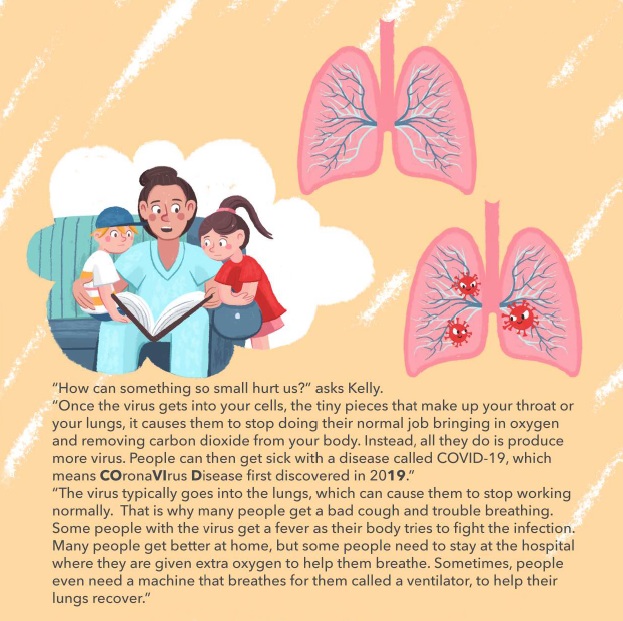The United States had its first reported case of coronavirus back in January 2020 and life has changed dramatically since then. We've needed to change the way we do everything... where we can go... who we can see... what we wear on our faces... how far apart we can stand from other people... etc. It's a lot to take in and the reasons why we have to do these things don't always make sense to children. As teachers, we know children will come to us to ask their questions, and sometimes their questions are hard to answer. Lauren Block MD-MPH and Adam E. Block Ph.D. wrote Kelly Stays Home: The Science of Coronavirus to help children find the answers to their questions and to give them the explanations they need. Keep reading to learn more about their book and how we can use Kelly Stays Home in our classrooms.
🍎 Authors: Lauren Block MD-MPH and Adam E. Block Ph.D
Author's Summary
Discover along with eight-year-old Kelly the science behind the COVID-19 illness, viral transmission, basic epidemiology, and social distancing needed to protect your kids and community. Dr. Lauren Block MD-MPH, a primary care physician and medical educator, and Dr. Adam Block Ph.D., a health economist, and public health professor are parents of three curious kids. After months of treating COVID-19 patients in New York City, this is what we teach our children about the science behind the COVID-19 pandemic. This is the only children's book that goes into depth on the science behind the spread of coronavirus, how the virus causes the symptoms it does, and how vaccines contribute to herd immunity. You and your children will understand why the virus spreads so rapidly, how handwashing and social distancing can prevent transmission, how kids can help others during the pandemic, how people who become ill are treated in the hospital, and how you can protect your family from infection.
Integrated Language Arts and Science Lesson
Since the coronavirus has lingered in the United States for so long... almost 10 months at the time of this posting... everybody, including children, knows something about it. Some children know a lot. Some know a little. Some even think they know a lot, but have the facts all jumbled in their minds. Doing an activity such as making a KWL chart with your class can help you determine how much your students actually know about the coronavirus. (Note: This particular lesson may need to be spread out over a period of a couple of days. Plan accordingly.)

What is a KWL Chart?
A KWL chart is a graphic organizer to gauge how much students think they know about a topic before the lesson starts and how much they learned when it's completed. A KWL chart is divided into three columns:- K... what I think I already know about the topic
- W... what I want to learn about the topic
- L... what I learned about the topic
- D... what I need to do to learn more about the topic
Step One: Using the KWL Chart
Before reading Kelly Stays Home to your class, take some time to talk with your students about the coronavirus and what they think they know about the coronavirus. As you call on the students to share their tidbits, keep in mind that this is not the time to tell them if their tidbit is right or wrong. The time for that will come later. For now, record the students' tidbits in the K column of the chart... no matter how far-fetched some of those tidbits seem!
Step Two: Kelly Stays Home
Step Three: Completing the KWL Chart
After reading and discussing Kelly Stays Home, you can finally complete your KWL chart. The process for filling out the third column is essentially the same as when you and your students filled out the first two. This time, however, everything that gets recorded under the L must be a fact. It must be 100% true. It is OK if not all of your students' questions from the second column weren't answered. Your students will enjoy seeing their list of things they've learned get longer and longer and longer!

To learn more about Kelly Stays Home, visit the Kelly Stays Home website or watch the video below.



